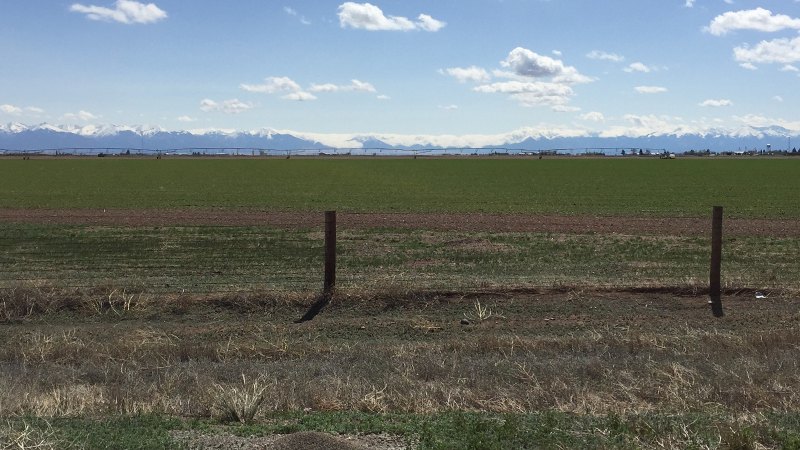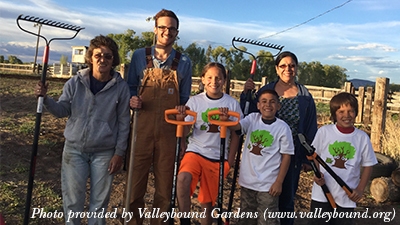Back to the Farm in the San Luis Valley
Leer en español
Photo by Kristin Jones
By Kristin Jones
The Colorado Trust is engaged in conversations with rural Coloradans as part of a new strategy for investing in the health and well-being of people in every corner of the state. Click here to read more about our community partnerships effort.
San Luis, Colorado, was once the kind of place where nearly everyone worked the fields.
“I picked potatoes, sorted potatoes, everything potatoes,” says 77-year-old Elias Bianes Garcia.
One day, as Garcia tells it, he’d had enough. He hitched a ride into Alamosa to follow his brother to war in Korea. “I was tired of potatoes.”
When Garcia returned to the U.S., he opened his own barber shop in Pueblo. Later, he came back here to a valley that has kept intact its clean air, wild herbs and unclouded view of the stars during decades of global urbanization.
He came back to a town that has changed in other ways, though. In the same decades that widened the Front Range footprint and crowded its highways, San Luis shrank.
Potato farming is still a big industry. But there are fewer jobs here than there once were, and a lot of them are taken by seasonal migrant workers. The unemployment rate in the county is nearly double the state average, according to Labor Department statistics. Many of the town’s younger residents have left for jobs in cities like Denver and Colorado Springs.
These days, the San Luis Valley is speckled with towns like this, where the old-timers outnumber their kids. Gas and food are expensive; well-stocked grocery stores are scarce. Rates of obesity and diabetes have grown. The younger generation walks less, farms less, ranches less. There is a heroin problem.
San Luis is the county seat of Costilla County, which ranks last of Colorado’s counties in terms of premature deaths, according to information compiled by the Robert Wood Johnson Foundation. There are no easy solutions to the barriers that get in the way of healthy living here. But across the valley, you can hear stories of people trying to improve things for the next generation.
Justin Garoutte grew up in a town called Antonito, 50 miles southwest of here in Conejos County. When he was a teenager there, his neighbors and family mistook his industriousness and dedication to the Catholic Church as piety. Really, Garoutte says now, he was struggling with being gay and deeply closeted.
Garoutte left Antonito almost as soon as he could—first for State Department-funded excursions to Tunisia and Germany during high school, and then to Colorado College on a scholarship. After graduating, he taught English in northern Germany.
And then in December, Garoutte made an unusual decision for someone with his access to opportunities: the 25-year-old moved back to the San Luis Valley.
It had to do with farming. Not exactly the kind of potato farming that drove Elias Bianes Garcia to enlist, but a gentler kind. Garoutte visited an educational farm in Belgium where children, their parents and the elderly came together to milk goats, make cheese and bake bread.
“It was just this utopia,” he says. “For community or healing or something.”
Garoutte had a vision for a garden in Antonito: It would have rows of vegetables, a campfire, an horno (clay oven) to honor the Mexican heritage of the town, a stage for performances. Maybe some goats.

Photo provided by Valleybound Gardens (www.valleybound.org)
Could a community garden in the San Luis Valley help bridge the gap between an older generation too close to the fields, and a younger one too far removed?
Five months later, there are strawberries planted in the old rodeo grounds in Antonito. Thirteen chickens live there. And a few days ago, Garoutte watched with satisfaction as some kids scampered around, sorting rocks into a circle while their grandmother picked weeds.
When the danger of frost dissipates, they’ll plant more.